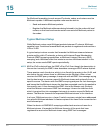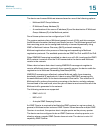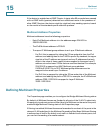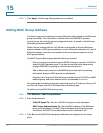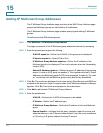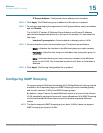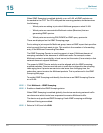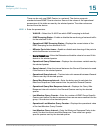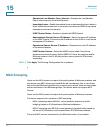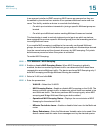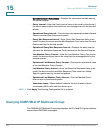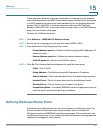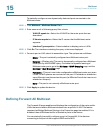
Multicast
Configuring IGMP Snooping
245 Cisco Small Business 300 Series Managed Switch Administration Guide
15
When IGMP Snooping is enabled globally or on a VLAN, all IGMP packets are
forwarded to the CPU. The CPU analyzes the incoming packets, and determines
the following:
• Which ports are asking to join which Multicast groups on what VLAN.
• Which ports are connected to Multicast routers (Mrouters) that are
generating IGMP queries.
• Which ports are receiving PIM, DVMRP, or IGMP query protocols.
These are displayed on the IGMP Snooping page.
Ports, asking to join a specific Multicast group, issue an IGMP report that specifies
which group(s) the host wants to join. This results in the creation of a forwarding
entry in the Multicast Forwarding Data Base.
The IGMP Snooping Querier is used to support a Layer 2 Multicast domain of
snooping switches in the absence of a Multicast router. For example, where
Multicast content is provided by a local server, but the router (if one exists) on that
network does not support Multicast.
The speed of IGMP Querier activity must be aligned with the IGMP-snooping-
enabled switches. Queries must be sent at a rate that is aligned to the snooping
table aging time. If queries are sent at a rate lower than the aging time, the
subscriber cannot receive the Multicast packets. This is performed in the IGMP
Snooping Edit page.
To enable IGMP Snooping and identify the device as an IGMP Snooping Querier
on a VLAN:
STEP 1 Click Multicast > IGMP Snooping.
STEP 2 Enable or disable the IGMP Snooping status.
When IGMP Snooping is enabled globally, the device monitoring network traffic
can determine which hosts have requested to receive Multicast traffic.
The device only performs IGMP Snooping if both IGMP snooping and Bridge
Multicast filtering are enabled.
STEP 3 Select a VLAN, and click Edit.



